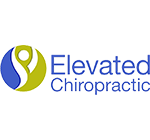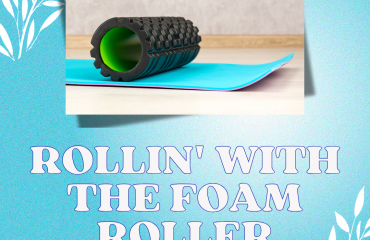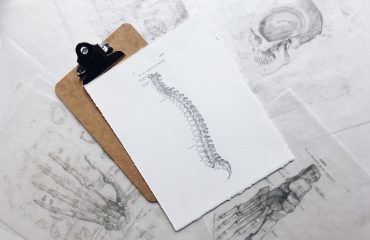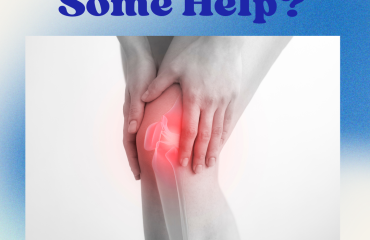
How it works
Cold therapy, also known as cryotherapy, works by reducing blood flow to a particular area, which can significantly reduce inflammation and swelling that causes pain, especially around a joint or a tendon. Cryotherapy can temporarily reduce nerve activity, which may also result in pain relief.
Types of Cryotherapy
There are a number of different ways to apply cold therapy to an affected area. Treatment options include:
- Ice packs or frozen gel packs
- Coolant sprays
- Ice massage
- Fill a 3-4 oz paper bathroom cup 3/4 of the way up with water and put it in your freezer.
- Tear away 3/4 of the paper cup (after ice is frozen) leaving the bottom of the cup for you to hold onto, and the ice exposed to rub onto your injury.
- Rub the ice over the areas of pain or discomfort for 5 minutes or until numb whichever occurs first. You should experience the therapeutic symptoms known as CBAN- Cold, Burning, Aching, and Numbness.
- Do not apply ice for more than 5 minutes as this can lead to tissue inury.
- Ice baths
- Start by filling your tub with a 1:3 ratio of water-to-ice (think one bucket of water for every three buckets of ice). Once your tub is ready, ease your way in. Start by gradually dipping your lower body into the bath so you can adjust properly to the cold. At first, you might soak for just 30 seconds or so. Even as you acclimate, though, always cap your ice baths at 15 minutes max.
- Other types of cold therapy include:
- Cryostretching, which uses cold to reduce muscle spasms during stretching
- Cryokinetics, which combines cold treatment and active exercise and can be useful for ligament sprains
- Whole-body cold therapy chambers
Benefits of Cryotherapy
1. Reduces migraine symptoms
Cryotherapy can help treat migraines by cooling and numbing nerves in the neck area. One study found that applying a neck wrap containing two frozen ice packs to the carotid arteries in the neck significantly reduced migraine pain in those tested. It’s thought that this works by cooling the blood passing through intracranial vessels. The carotid arteries are close to the skin’s surface and accessible.
2. Numbs nerve irritation
Many athletes have been using cryotherapy to treat injuries for years, and one of the reasons why is that it can numb pain. The cold can actually numb an irritated nerve. Doctors will treat the affected area with a small probe inserted into the nearby tissue. This can help treat pinched nerves or neuromas, chronic pain, or even acute injuries.
3. Helps treat mood disorders
The ultra-cold temperatures in whole-body cryotherapy can cause physiological hormonal responses. This includes the release of adrenaline, noradrenaline, and endorphins. This can have a positive effect on those experiencing mood disorders like anxiety and depression. One study showed that whole-body cryotherapy was actually effective in short-term treatment for both.
4. Reduces arthritic pain
Localized cryotherapy treatment isn’t the only thing that’s effective at treating serious conditions; one study found that whole-body cryotherapy significantly reduced pain in people with arthritis. They found that the treatment was well-tolerated. It also allowed for more aggressive physiotherapy and occupational therapy as a result. This ultimately made rehabilitation programs more effective.
5. May help treat low-risk tumors
Targeted, localized cryotherapy can be used as a cancer treatment. In this context, it’s called “cryosurgery.” It works by freezing cancer cells and surrounding them with ice crystals. It’s current use is to treat some low-risk tumors for certain types of cancer, including prostate cancer.
6. May help prevent Dementia and Alzheimer’s disease
While we need more research to evaluate the effectiveness of this strategy, the theory is that whole-body cryotherapy could help prevent Alzheimer’s and other types of dementia. It’s thought that this may be an effective treatment because the anti-oxidative and anti-inflammatory effects of cryotherapy could help combat the inflammatory and oxidative stress responses that occur with Alzheimer’s.
7. Treats atopic dermatitis and other skin conditions
Atopic dermatitis is a chronic inflammatory skin disease with signature symptoms of dry and itchy skin. Because cryotherapy can improve antioxidant levels in the blood and can simultaneously reduce inflammation, it makes sense that both localized and whole-body cryotherapy can help treat atopic dermatitis. Another study (in mice) examined its effect on acne, targeting the sebaceous glands.
When NOT to Cryo
The most common side effects of any type of cryotherapy are numbness, tingling, redness, and irritation of the skin. These side effects are almost always temporary. Make an appointment with your doctor if they don’t resolve within 24 hours.
You should never use cryotherapy for longer than is recommended for the method of therapy you’re using. For whole body cryotherapy, this would be more than four minutes. If you’re using an ice pack or ice bath at home, you should never apply ice to the area for more than 20 minutes. Wrap ice packs in a towel so you don’t damage your skin.
Those with diabetes or any conditions that affect their nerves should not use cryotherapy. They may be unable to fully feel its effect, which could lead to further nerve damage. You should not use cold therapy on stiff muscles or joints.
Do not use cold therapy if you have poor circulation. Cold therapy has been known to cause vasoconstriction (narrowing of blood vessels), increase blood pressure, increase your heart rate temporarily due to the body’s stress response to the cold, and increase cardiac workload, etc. The body’s increased cardiac workload is typically caused from ice baths or cold-water immersion because the body has to work harder to maintain its core temperature. Prolonged exposure to very cold environments may lead to bradycardia (lower heart rate). Individuals who have pre-existing heart conditions (coronary artery disease, arrhythmias, ect may be at risk of adverse effects from cold therapy. The rise in blood pressure and vasoconstriction of blood vessels may trigger angina (chest pain) or possibly heart attacks.
Be sure to build up your tolerance to cold therapy, especially when using cold chambers and ice baths. Sudden immersion in very cold water may trigger a condition known as the cold shock response. Cold shock response is characterized by tachycardia (rapid heart rate), hyperventilation, and possibly cardiac issues.
Applying cold therapy
For home treatment, apply an ice pack wrapped in a towel or ice bath to the affected area. You should never apply a frozen item directly to the skin, as it can cause damage to the skin and tissues. Apply cold treatment as soon as possible after an injury.
Use cold therapy for short periods of time, several times a day. Ten to 15 minutes is fine, and no more than 20 minutes of cold therapy should be used at a time to prevent nerve, tissue, and skin damage. You can elevate the affected area for best results.
Consult
| There is plenty of anecdotal evidence and some research supporting the claims that cryotherapy can offer health benefits, but whole-body cryotherapy is still being researched. Because it’s still being researched, talk to your healthcare provider to assess whether cold therapy is right for you. For more information: https://www.healthline.com/health/chronic-pain/treating-pain-with-heat-and-cold#risks https://www.healthline.com/health/cryotherapy-benefits#benefits https://www.coachamypt.com/blog/2016/12/29/how-to-ice-cup-massage |




